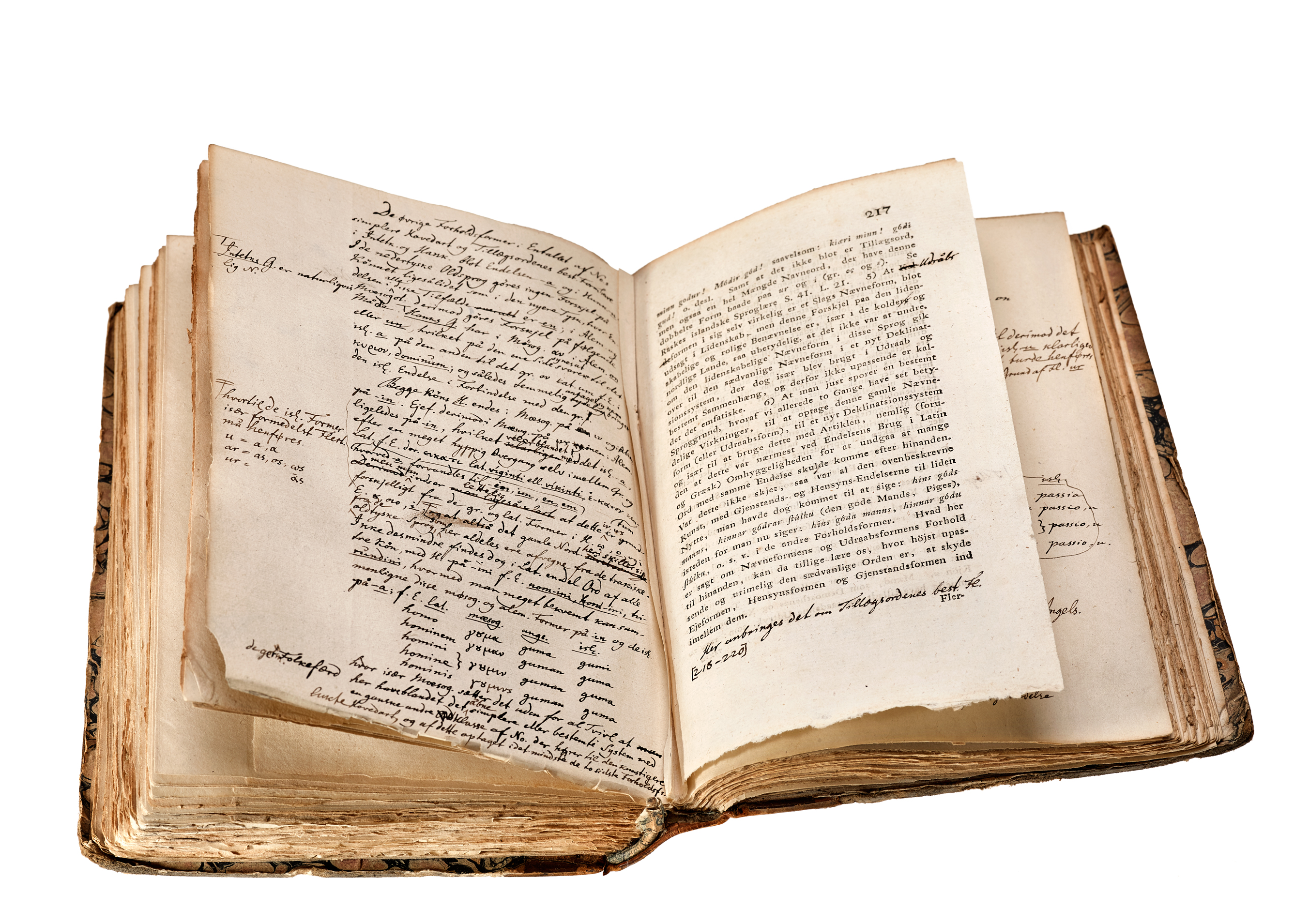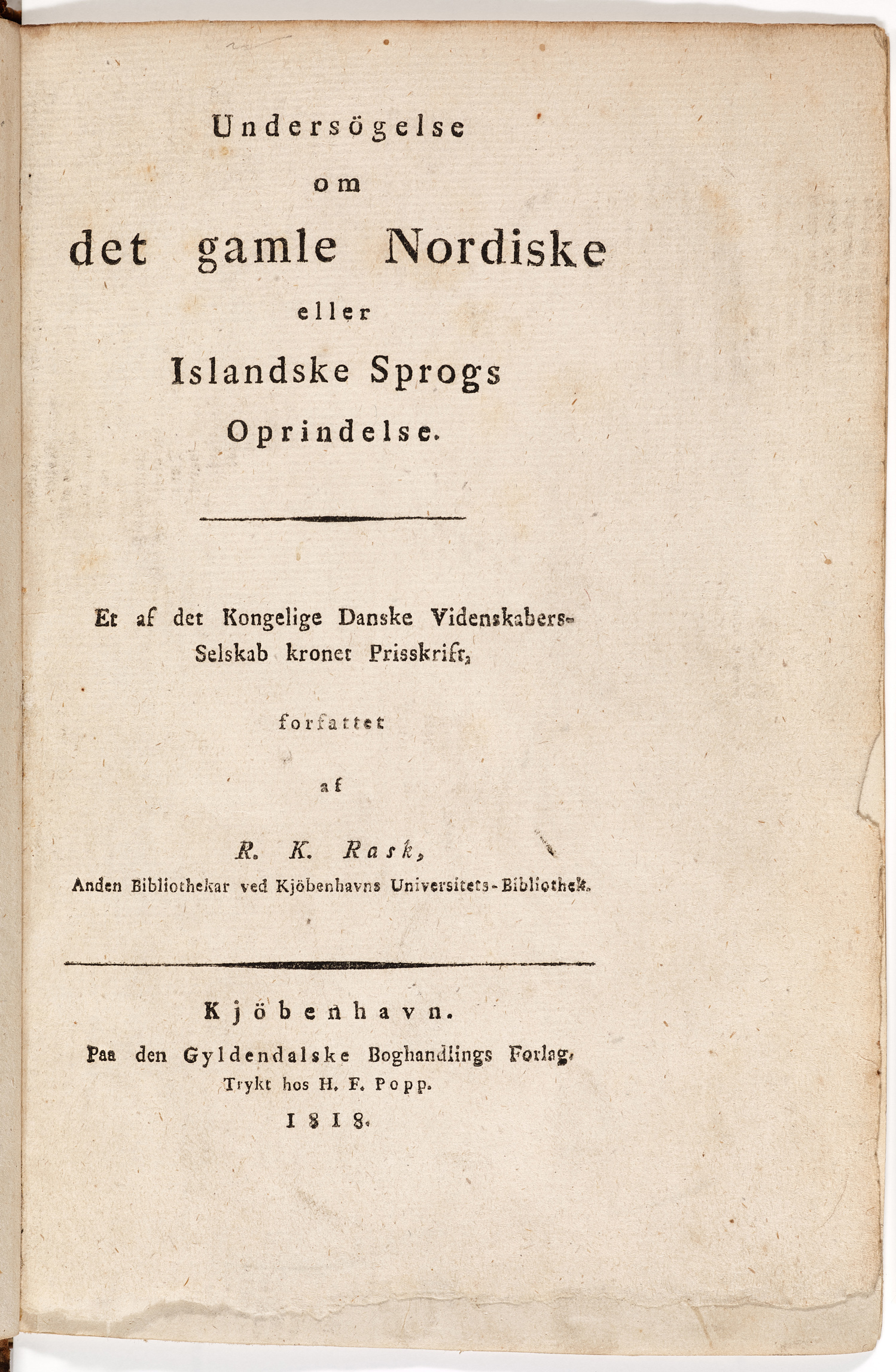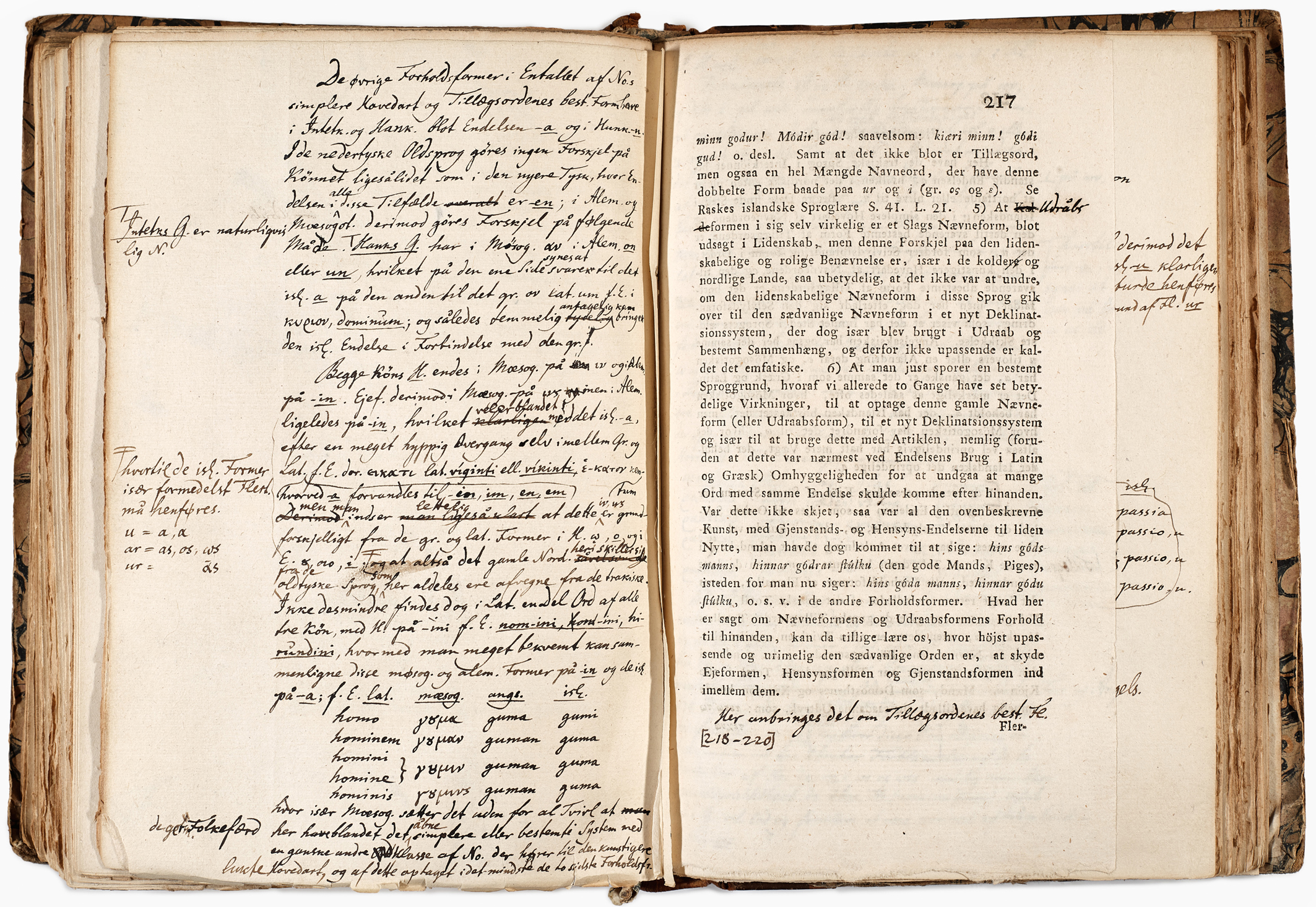Rasmus Rask's Investigation Turns 200 in 2018
Rasmus Rask's foundational text on the origin of Icelandic was originally written as a prize essay. The Arnamagnæan Collection holds a copy of the first printed edition, which turns 200 years old this year, with notes written in the author's own hand.

In addition to manuscripts in the most basic understanding — that is, fully hand-written codices — the Arnamagnæan Collection contains a number of early printed treasures, as well as items that lie somewhere between manuscript and printed book.
This month’s featured manuscript is essentially a printed book, but one which contains the handwritten notes of one of Nordic Philology’s great names, Rasmus Christian Rask (1787-1832). This year marks the 200th anniversary of the publication of Rask’s magnum opus on Icelandic, Investigation of the Origin of the Old Norse or Icelandic Language, a work which can be said to have jump-started linguistic research in the Nordic languages.
Rasmus Rask, Philologist
Already from an early age Rasmus Rask, who was born near Odense on Funen in 1787, was interested in the Nordic languages. In his late teenage
Nyerup helped the young student find a place in Regensen, a dormitory in the
After returning from Iceland, Rask was instrumental in the founding of the Icelandic Literary Society (Hið Íslenzka Bókmenntafélag) in 1816 and the Royal Nordic Society of Antiquaries (Det Kongelige Nordiske Oldskriftselskab) in 1825. The latter was formed after Rask had been on another journey abroad, which would bring him to Russia, Persia, and India, where he studied numerous Asian languages and collected manuscripts, which are now part of the Oriental Collection at the Royal Danish Library. Only a year before his death, Rasmus Rask became professor of Eastern Languages at the University of Copenhagen.
Investigation
 Rask’s Investigation of the Old Norse or Icelandic Language is one of the foundational texts for the discipline of comparative linguistics, but it began as a prize essay in response to a call given by the Royal Danish Academy of Sciences and Letters (Kongelige Danske Videnskabernes Selskab). The objective, according to what Rask writes in the introduction to the published volume, was
Rask’s Investigation of the Old Norse or Icelandic Language is one of the foundational texts for the discipline of comparative linguistics, but it began as a prize essay in response to a call given by the Royal Danish Academy of Sciences and Letters (Kongelige Danske Videnskabernes Selskab). The objective, according to what Rask writes in the introduction to the published volume, was
“Investigating with historical criticism and illustrating with appropriate examples, from which source the old Scandinavian language may most safely be derived; stating the character of the language and its relations from ancient times and throughout the Middle Ages both to the Nordic and to the Germanic dialects; and ascertaining the exact principles upon which all derivation and comparison in these idioms should be based.”
The essay was delivered to the Academy on the 2nd of December 1814, when Rask was already in Iceland on his journey.
The importance of Rask’s Investigation can hardly be understated. The careful comparison of Icelandic to Latin and Greek resulted in a description of the Germanic Sound Shift, also known as Grimm’s Law after the German philologist Jacob Grimm (of the Brothers Grimm), who described the phenomenon in his 1822 Deutsche Grammatik.
Rask presents his description of the sound correspondences between Greek and Latin on the one side and Germanic on the other nearly as if the latter derived from the former, rather than both from a common ancestor (which we today call Proto-Indo-European). He writes for example, that “π becomes f” as in Greek πατήρ, Icelandic faðir ‘father’. Rask goes on to note that “often they are also changed in other ways”, especially in the middle of words, for
Rask 116 - A first printing with the Author’s own notes
This brings us to the featured manuscript of the month, which today bears the shelfmark Rask 116. As the beginning of the shelfmark indicates, Rask 116 is part of the Rask collection, a collection of 119 manuscripts and printed books which had belonged to Rask, many of which he collected during his time in Iceland. Following Rask’s death in 1832, the collection was sold to the Arnamagnæan Commission by his younger brother, Rev. Hans Kristian Rask, for the sum of 150 Rigsbankdaler (about the price of 5 cows).
The printed book is
 Throughout these pages of
Throughout these pages of
Yet it is also clear from the notes that Rask was preparing for
Contact
Seán Vrieland is a post-doc at the Arnamagnæan Institute.
Telephone: +45 3533 7566
sean.vrieland@hum.ku.dk
Bibliography
Nielsen, Hans Frede. 2008. "Rasmus Kristian Rask (1787-1832): Liv og Levned". Odense: Syddansk.
Gregersen, Frans (ed.). 2013. Investigation of the Origin of the Old Norse or Icelandic Language: New edition of the 1993 English translation by Niels Ege. Amsterdam: John Benjamins.
Hovdhaugen, Even, Fred Karlsson, Carol Henriksen og Bengt Sigurd. 2000. The History of Linguistics in the Nordic Countries. Jyväskylä: Societas Scientiarum Fennica.
Rask, Rasmus Kristian. 1818. Undersøgelser om det gamle Nordiske eller Islandske Sprogs Oprindelse. Copenhagen: Gyldendal.
Thomsen, Vilhelm. 1899. "Rask, Rasmus Kristian". Dansk Biografisk Leksikon XIII. Copenhagen, s. 489-501.
